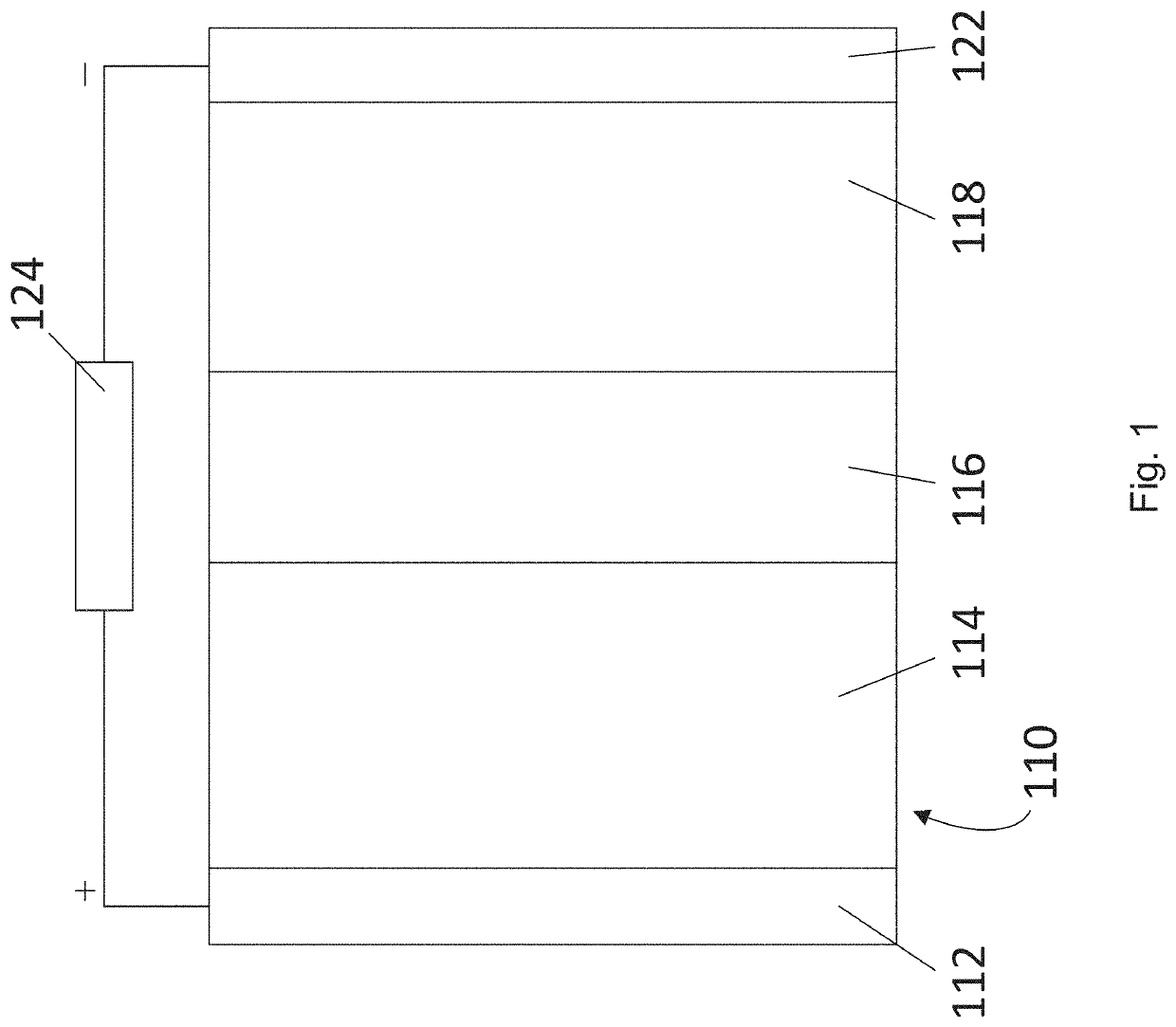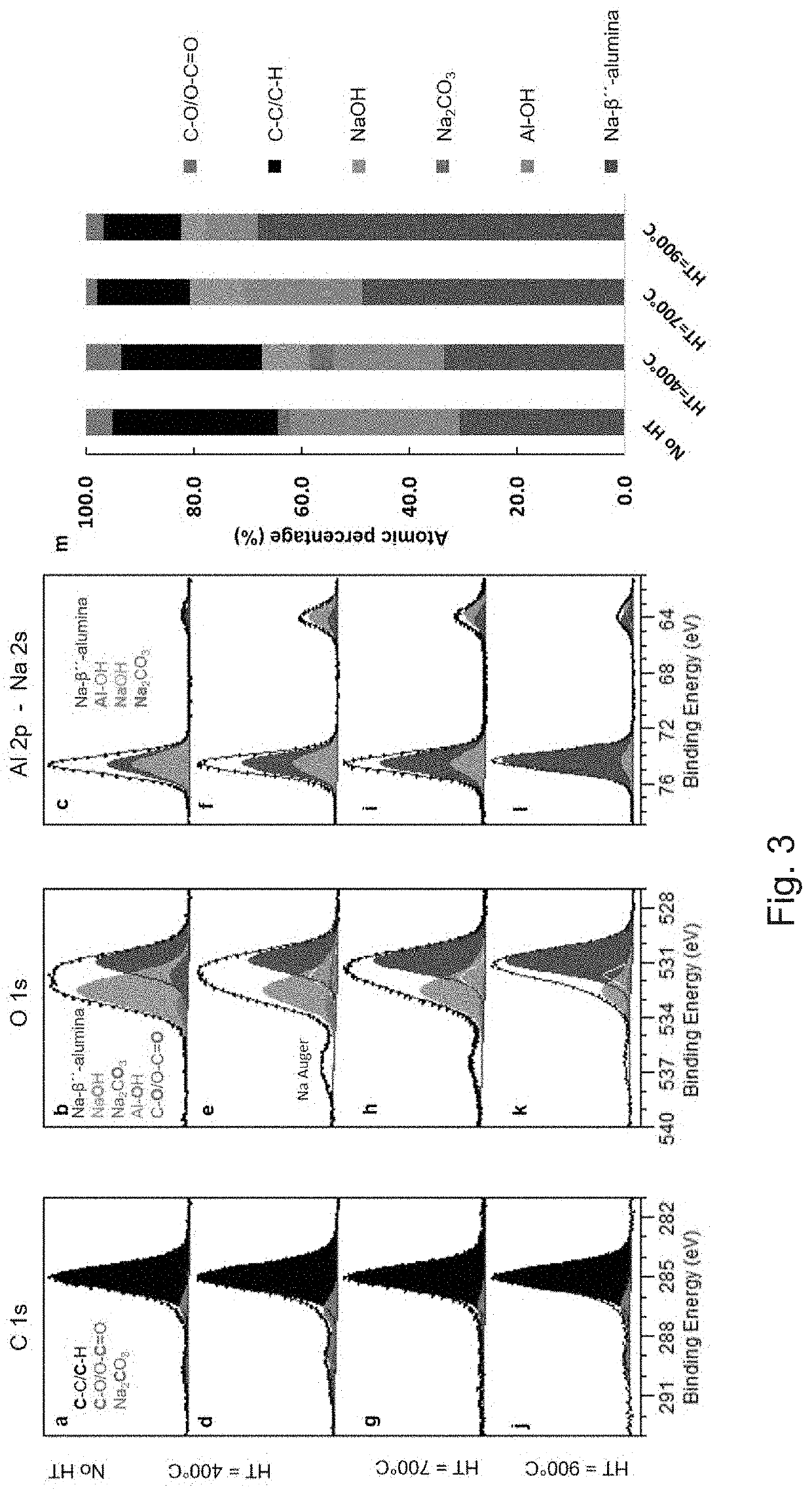Surface treatment of a solid electrolyte to lower the interfacial resistance between the solid electrolyte and an electrode
a solid electrolyte and surface treatment technology, applied in the field of electrochemical devices, can solve the problems of short-circuit cell of lithium metal dendrites, increase the ccd value, impede the use of solid electrolyte for room temperature batteries, etc., to reduce the area specific resistance, increase the adhesion of sodium, and reduce the effect of interfacial resistan
- Summary
- Abstract
- Description
- Claims
- Application Information
AI Technical Summary
Benefits of technology
Problems solved by technology
Method used
Image
Examples
example
[0046]The following Example is provided in order to demonstrate and further illustrate certain embodiments and aspects of the present invention and is not to be construed as limiting the scope of the invention.
Overview
[0047]All-solid-state batteries with an alkali metal anode have the potential to achieve high energy density. However, the onset of dendrite formation limits the maximum plating current density across the solid electrolyte and prevents fast charging. It was shown that the maximum plating current density is related to the interfacial resistance between the solid electrolyte and the metal anode. Due to their high ionic conductivity, low electronic conductivity, and stability against sodium metal, Na-β″-alumina ceramics are excellent candidates as electrolytes for room-temperature all-solid-state batteries. Herein, we demonstrate that a heat treatment of Na-β″-alumina ceramics in argon atmosphere enables an interfacial resistance 2 and critical current densities up to 12 ...
PUM
| Property | Measurement | Unit |
|---|---|---|
| temperature | aaaaa | aaaaa |
| critical current density | aaaaa | aaaaa |
| interfacial resistances | aaaaa | aaaaa |
Abstract
Description
Claims
Application Information
 Login to View More
Login to View More - R&D
- Intellectual Property
- Life Sciences
- Materials
- Tech Scout
- Unparalleled Data Quality
- Higher Quality Content
- 60% Fewer Hallucinations
Browse by: Latest US Patents, China's latest patents, Technical Efficacy Thesaurus, Application Domain, Technology Topic, Popular Technical Reports.
© 2025 PatSnap. All rights reserved.Legal|Privacy policy|Modern Slavery Act Transparency Statement|Sitemap|About US| Contact US: help@patsnap.com



